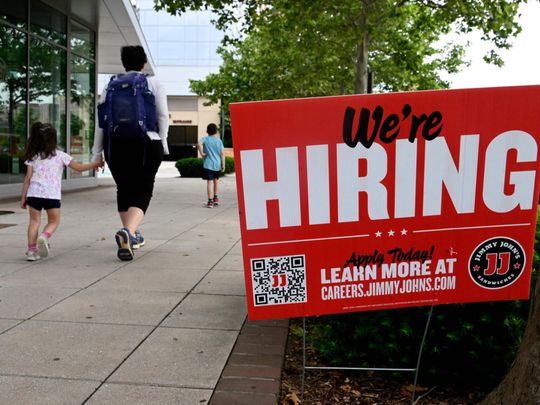
New York: US hiring surged in January and the jobless rate fell to a 53-year low, showcasing an unexpectedly hot labor market that will likely bolster the Federal Reserve’s resolve to extend its run of interest-rate hikes.
Nonfarm payrolls increased 517,000 last month after an upwardly revised 260,000 gain in December, a Labor Department report showed Friday. The unemployment rate dropped to 3.4 per cent, the lowest since May 1969 and average hourly earnings grew at steady clip.
The figure beat all estimates in a Bloomberg survey of economists, which called for a 188,000 gain in payrolls and for the unemployment rate to rise to 3.6 per cent.
Resilience of the job market
Hiring was broad-based across sectors, led by leisure and hospitality, professional and business services and health care. Government employment increased by the most since July, which reflected the return of University of California workers after the end of a strike.
The figures highlight the resilience of the job market despite rising borrowing costs, a pullback in consumer demand and an overall uncertain economic outlook. Demand for workers continues to outpace supply, threatening to keep wage growth strong and fan inflation further.
That’s been a key frustration for the Fed, outlined by Chair Jerome Powell on Wednesday after the central bank slowed its pace of interest-rate hikes to a quarter point. Even so, Powell expressed optimism that officials can still pull off a so-called soft landing, in which they quell inflation without putting millions of people out of work.
In order to do so, the Fed has said it’s key to ease wage gains. The jobs report showed average hourly earnings rose 0.3 per cent from December and up 4.4 per cent from a year earlier. That’s an easing from the prior month, which was revised higher. At the same time, the average workweek increased to 34.7 hours, the highest since March.
Other measures have shown wage growth moderating, like the employment cost index and unit labor costs out earlier this week.











